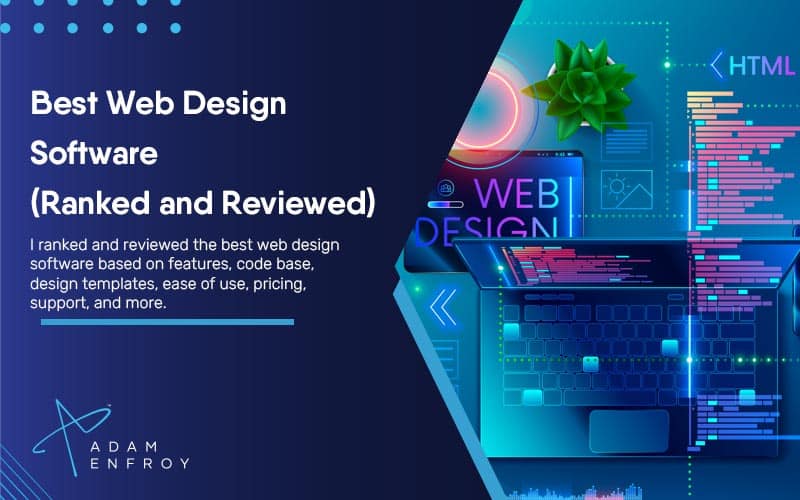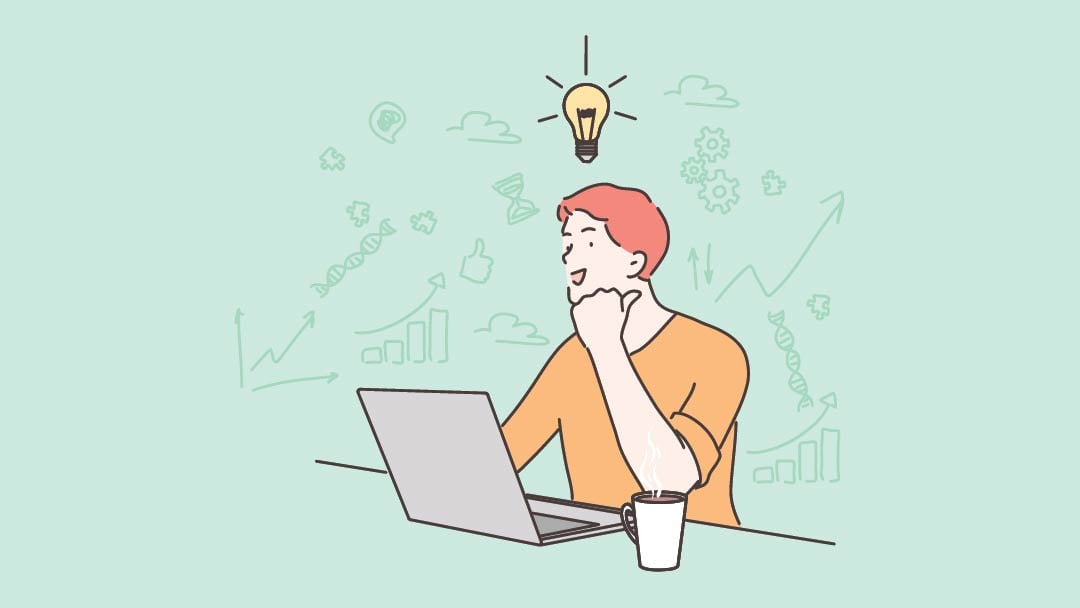All Categories
Featured
Table of Contents
- – Web Design Definition - Techterms Tips and Tri...
- – What Does A Web Designer Do? - Careerexplorer...
- – What Does A Web Designer Do? - Careerexplorer...
- – The Top Ecommerce, Website Design ... - Seatt...
- – What Is Web Design? A Comprehensive Guide - W...
- – Penner Home - Durham Web Design - Penner Web ...
- – Why Good Web Design Is Important, And Why Yo...
- – Collaborate & Create Amazing Graphic Design ...
- – Web Designer: Learn The 9 Skills You Need In...
- – Powderkeg: Web Design Madison, Wi Tips and T...
- – What Is Web Design, How To Do It Right And B...
Web Design Definition - Techterms Tips and Tricks:
Quick summary Usability and the energy, not the visual style, identify the success or failure of a website. Given that the visitor of the page is the only individual who clicks the mouse and for that reason decides everything, user-centric design has actually developed as a basic approach for successful and profit-oriented website design - web design frederick md.
and the utility, not the visual design, determine the success or failure of a website. Considering that the visitor of the page is the only individual who clicks the mouse and for that reason decides everything, user-centric style has actually ended up being a basic method for successful and profit-oriented web design. If users can't use a feature, it might as well not exist.
g. where the search box should be placed) as it has currently been done in a number of articles; rather we focus on the methods which, utilized effectively, can result in more advanced design choices and simplify the process of viewing presented details. Please see that you might be interested in the usability-related short articles we've published before: Principles Of Good Website Design And Efficient Web Style Standards, In order to utilize the principles effectively we initially need to understand how users engage with websites, how they believe and what are the standard patterns of users' habits.
What Does A Web Designer Do? - Careerexplorer Tips and Tricks:
Visitors glimpse at each brand-new page, scan some of the text, and click on the very first link that catches their interest or slightly resembles the thing they're trying to find. There are big parts of the page they do not even look at. Most users look for something interesting (or helpful) and clickable; as quickly as some promising prospects are discovered, users click.
If a page supplies users with top quality content, they want to jeopardize the content with advertisements and the design of the site. This is the reason why not-that-well-designed websites with high-quality material acquire a lot of traffic over years. Content is more important than the style which supports it.

Extremely simple concept: If a website isn't able to satisfy users' expectations, then designer failed to get his task done properly and the business loses cash. The greater is the cognitive load and the less intuitive is the navigation, the more ready are users to leave the site and search for options.
What Does A Web Designer Do? - Careerexplorer Tips and Tricks:
Neither do they scan website in a direct fashion, going sequentially from one website area to another one. Instead users satisfice; they choose the first affordable choice. As quickly as they find a link that appears like it may result in the goal, there is an excellent chance that it will be instantly clicked.
It does not matter to us if we understand how things work, as long as we can utilize them. If your audience is going to act like you're designing billboard, then design great billboards." Users want to have the ability to manage their web browser and depend on the consistent information presentation throughout the site.
If the navigation and site architecture aren't intuitive, the variety of enigma grows and makes it harder for users to comprehend how the system works and how to receive from point A to point B. A clear structure, moderate visual clues and quickly identifiable links can assist users to find their course to their aim.
The Top Ecommerce, Website Design ... - Seattle Tips and Tricks:

claims to be "beyond channels, beyond items, beyond distribution". What does it imply? Because users tend to explore websites according to the "F"-pattern, these three declarations would be the very first aspects users will see on the page once it is packed. The design itself is simple and instinctive, to understand what the page is about the user requires to browse for the response.
When you have actually achieved this, you can interact why the system is helpful and how users can benefit from it. Do Not Squander Users' Persistence, In every task when you are going to use your visitors some service or tool, attempt to keep your user requirements minimal.
Novice visitors want to, not filling long web kinds for an account they might never ever use in the future. Let users explore the website and discover your services without forcing them into sharing personal data. It's not affordable to require users to get in an e-mail address to test the function.
What Is Web Design? A Comprehensive Guide - Wix.com Tips and Tricks:
And that's what you desire your users to feel on your web site. The registration can be done in less than 30 seconds as the type has horizontal orientation, the user doesn't even need to scroll the page.
A user registration alone is adequate of an obstacle to user navigation to cut down on incoming traffic. Handle To Focus Users' Attention, As websites supply both fixed and dynamic content, some elements of the user interface attract attention more than others do.
Focusing users' attention to specific locations of the website with a moderate use of visual elements can assist your visitors to obtain from point A to point B without thinking about how it really is expected to be done. The less concern marks visitors have, the they have and the more trust they can develop towards the business the website represents.
Penner Home - Durham Web Design - Penner Web Design ... Tips and Tricks:
4. Pursue Function Direct exposure, Modern web designs are typically slammed due to their approach of guiding users with visually appealing 1-2-3-done-steps, big buttons with visual results etc. From the design viewpoint these aspects actually aren't a bad thing. On the contrary, such as they lead the visitors through the website content in an extremely easy and easy to use method.
The site has 9 main navigation options which are noticeable at the very first glance. The option of colors may be too light, though. is a basic principle of effective interface design. It doesn't truly matter how this is achieved. What matters is that the material is well-understood and visitors feel comfortable with the method they communicate with the system.
Instead a rate: simply what visitors are looking for. An optimum solution for efficient writing is touse short and succinct phrases (come to the point as quickly as possible), use scannable design (classify the content, use numerous heading levels, use visual elements and bulleted lists which break the flow of uniform text blocks), use plain and unbiased language (a promotion does not need to sound like ad; give your users some reasonable and objective factor why they ought to use your service or stay on your website)6.
Why Good Web Design Is Important, And Why You Need It Tips and Tricks:
Users are seldom on a site to take pleasure in the style; additionally, most of the times they are looking for the details in spite of the design - web design frederick md. Make every effort for simpleness instead of complexity. From the visitors' perspective, the very best site style is a pure text, without any ads or further material blocks matching precisely the question visitors used or the material they have actually been trying to find.
Finch plainly presents the info about the site and gives visitors an option of choices without overcrowding them with unnecessary content. 7. Don't Be Scared Of The White Area, Really it's really hard to overstate the importance of white space. Not only does it assist to for the visitors, but it makes it possible to perceive the details provided on the screen.
Complex structures are harder to check out, scan, analyze and work with. If you have the option between separating two design sections by a visible line or by some whitespace, it's normally much better to utilize the whitespace solution. (Simon's Law): the better you manage to provide users with a sense of visual hierarchy, the much easier your material will be to perceive.
Collaborate & Create Amazing Graphic Design For Free Tips and Tricks:
The same conventions and guidelines should be applied to all elements.: do the most with the least amount of hints and visual components. Clarity: all parts need to be created so their significance is not unclear.
Conventions Are Our Friends, Traditional style of site elements doesn't lead to a boring website. As they decrease the learning curve, the need to figure out how things work. It would be an usability nightmare if all websites had various visual discussion of RSS-feeds. That's not that different from our regular life where we tend to get utilized to fundamental principles of how we arrange data (folders) or do shopping (placement of products).
comprehend what they're expecting from a site navigation, text structure, search placement etc. A case in point from functionality sessions is to translate the page in Japanese (presuming your web users don't know Japanese, e. g. with Babelfish) and offer your functionality testers with a job to find something in the page of various language.
Web Designer: Learn The 9 Skills You Need In 2022 - Skillcrush Tips and Tricks:
Steve Krug recommends that it's better to, however take advantages of conventions when you don't. 10. Test Early, Test Typically, This so-called TETO-principle must be applied to every web design project as usability tests often offer into substantial issues and concerns related to a given design. Test not too late, not insufficient and not for the wrong reasons.
Some important points to bear in mind: according to Steve Krug, and testing one user early in the task is much better than testing 50 near the end. Accoring to Boehm's first law, errors are most regular throughout requirements and style activities and are the more costly the later they are gotten rid of.
That means that you design something, test it, repair it and then evaluate it once again. There might be problems which have not been discovered during the first round as users were practically blocked by other issues.
Powderkeg: Web Design Madison, Wi Tips and Tricks:

This holds for designers as well. After you have actually dealt with a website for few weeks, you can't observe it from a fresh perspective anymore. You know how it is built and therefore you understand exactly how it works you have the knowledge independent testers and visitors of your site would not have.
It can be connected to other locations such as graphic design, user experience, and multimedia arts, but is more appropriately seen from a technological viewpoint. It has ended up being a large part of people's daily lives. It is hard to think of the Internet without animated graphics, different styles of typography, background, videos and music.

Throughout 1991 to 1993 the World Wide Web was born. Text-only pages could be viewed using a simple line-mode internet browser. In 1993 Marc Andreessen and Eric Bina, developed the Mosaic browser. At the time there were multiple web browsers, nevertheless most of them were Unix-based and naturally text heavy. There had been no integrated method to graphic style components such as images or noises.
What Is Web Design, How To Do It Right And Best Skills - Rock ... Tips and Tricks:
The W3C was created in October 1994 to "lead the Internet to its full capacity by establishing typical procedures that promote its development and guarantee its interoperability." This discouraged any one company from monopolizing a propriety browser and programs language, which might have changed the effect of the Internet as a whole.
As this has actually occurred the innovation of the web has likewise carried on. There have also been considerable modifications in the method people use and access the web, and this has actually changed how sites are designed. Since completion of the web browsers wars [] new browsers have actually been released. A lot of these are open source implying that they tend to have much faster advancement and are more helpful of brand-new standards.
Learn more about Lovell Media Group LLC or TrainACETable of Contents
- – Web Design Definition - Techterms Tips and Tri...
- – What Does A Web Designer Do? - Careerexplorer...
- – What Does A Web Designer Do? - Careerexplorer...
- – The Top Ecommerce, Website Design ... - Seatt...
- – What Is Web Design? A Comprehensive Guide - W...
- – Penner Home - Durham Web Design - Penner Web ...
- – Why Good Web Design Is Important, And Why Yo...
- – Collaborate & Create Amazing Graphic Design ...
- – Web Designer: Learn The 9 Skills You Need In...
- – Powderkeg: Web Design Madison, Wi Tips and T...
- – What Is Web Design, How To Do It Right And B...
Latest Posts
Web Design And Applications - W3c Tips and Tricks:
Web Design Blog - Webdesigner Depot Webdesigner Depot Tips and Tricks:
53 Web Design Tools To Help You Work Smarter In 2022 Tips and Tricks:
More
Latest Posts
Web Design And Applications - W3c Tips and Tricks:
Web Design Blog - Webdesigner Depot Webdesigner Depot Tips and Tricks:
53 Web Design Tools To Help You Work Smarter In 2022 Tips and Tricks: